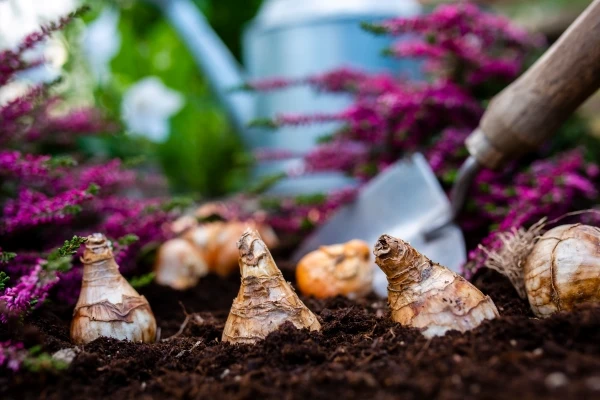
Tempting Tropicals
It’s time to give in to tropical temptations! Palms, Hibiscus, Mandevilla, Dipladenia, and Elephant Ears are a few ‘must have’ summer plants for Long Island gardens and landscapes. Learn more about these easy additions to your tropical paradise.
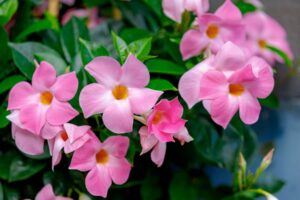
It vines and it twirls… Mandevillas are tropical vines with incredible flowers in shades of pink, white or red. Considered a ‘hot plant’ for summer gardens, Mandevilla has become increasingly popular for use in pots and planters. Think vertical when you plant and use it on trellises, obelisks, mailbox posts, fences, gazebos. Mandevilla enjoys hot summer weather.
Helpful tips:
• Grow in full sun for best flowering.
• Use potting soil that is moist, yet well drained in planters.
• Fertilize with a Blossom Booster fertilizer according to label directions.
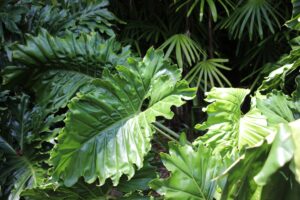
Are you all ears? Elephant ears, popular with gardeners of all ages, make dramatic additions to the garden or landscape. Grown from bulbs, elephant ears dazzle with their interesting leaves (leaf size and color depends on the variety). Use it in pots or planters, or plant directly in the garden.
Helpful tips:
• Best for sunny spots
• Well-drained soils
• Remember – this is a tropical bulb! Two options for winter months: store the bulb in a frost-free location or consider keeping it as a houseplant.
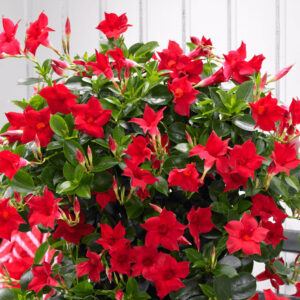
Another non-stop summer bloomer is Dipladenia. Its beautiful flowers, in shades of pink and red, and white are perfect for planters, pots, and garden beds. Care for Dipladenia is the same as Mandevilla. The differences: Dipladenias are shrub-like in growth habit with smaller flowers; Mandevillas are vining with larger flowers.
Helpful tips worth repeating:
• Grow in full sun for best flowering.
• Use potting soil that is moist, yet well drained in planters.
• Fertilize with a Blossom Booster fertilizer according to label directions.
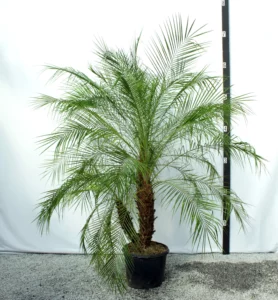
Looking for a pretty palm for outdoor summer enjoyment? Phoenix roebelenii, aka Pygmy Date Palm or Roebelini Palm, is a perfect choice sun or light shade. This slow growing, graceful palm has fine, feathery foliage. A word of caution – beware of sharp spines found at the base of the fronds. They are perfect for containers; use as a single specimen or in groups of three by decks, patios, or pools. When summer’s over, bring your potted palm indoors (provide as much bright light as possible) for continued enjoyment.
Helpful tips:
• Water thoroughly, and then allow the soil to dry slightly between waterings.
• Adequate drainage is necessary; be certain to use potting or container mix when planting.
• Bring indoors in late September (provide as much bright light as possible) for continued winter enjoyment.
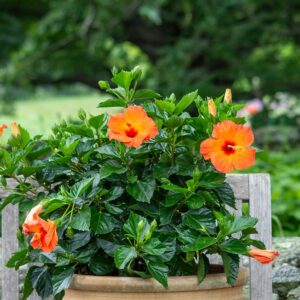
Nothing screams ‘tropical paradise’ more than flowering Hibiscus! Dreamy, colorful flowers – in shades of red, yellow, pink, and orange – make a big statement wherever you plant them! They will put on a fabulous show of flowers until frost. Be creative; use Hibiscus in planters, pots, window boxes, or landscape beds and borders.
Helpful tips:
• Provide abundant sunshine to these sunworshippers!
• Keep the potting soil evenly moist; never allow it to dry out.
• Use blossom booster fertilizer; be sure to read and follow label directions for application rates.



